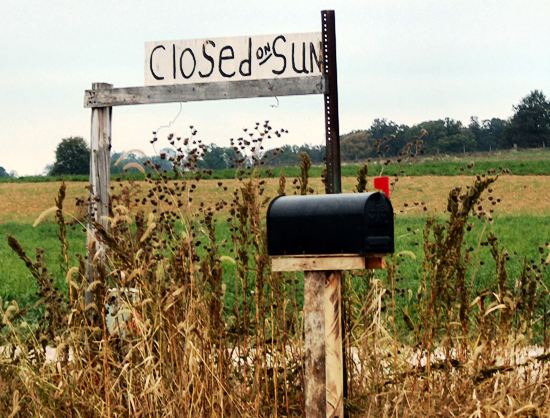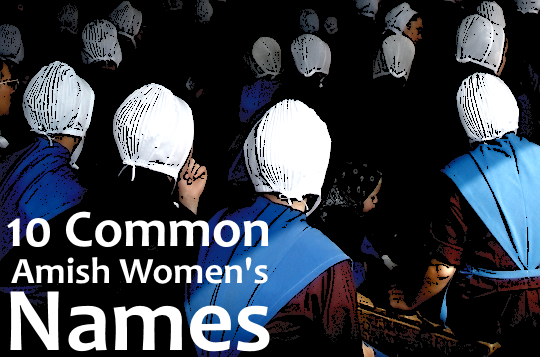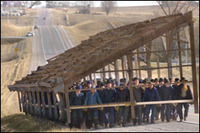Settlements that Failed: Amish on the Border
Texas seems an odd spot to find Amish. Besides the current community in Bee County, there have been at least four other attempts to settle the Lone Star State. In his meticulously researched The Amish in America: Settlements that Failed, 1840-1960, David Luthy describes a short-lived settlement that came about in the state’s southernmost county.

Amish fields today brim with corn, alfalfa and hay. One of the pioneering settlers in Cameron County, originally from Holmes County, Ohio, had more tropical ambitions, planting seven acres of fruit trees–the majority orange and grapefruit, but including pomegranate, banana, kumquat, fig, date, coconut, and papaya. The Amishman chose such a mix “so that when my old friends in the North come here on a visit in a few years from now [they] can sure find some fruit that excites their taste.”
In November 1924, the main group of settlers entered a Cleveland train for the 1500 mile trip to their new home. The long journey meant spending Sunday on the train. As luck would have it, there was a minister along with the group. Luthy points out that this was perhaps the only instance when an Amishman preached a sermon while on a moving train.
The settlement, as it turns out, was stunted from the start. The seven families who set up shop in Cameron County were the only ones to ever make the move.
The Rio Grande but a stone’s throw away, the Plain settlers had much contact with their southern neighbors. Luthy writes that “the Amish marveled at how simply the Mexicans lived. Hardly any had tables, and very few had silverware. They boiled meat and vegetables together and would use a tortilla to dip it from the bowl to their mouths…They never used wheat but corn for everything, grinding it with rocks. They drank the blackest coffee.”
One of the Amish settlers related a memorable experience down by the border.
Crops raised in Cameron County included citrus, sweet corn, cotton, and a variety of vegetables. Irrigation was a challenge. The state tapped the Rio Grande, using a system of pumps and canals to bring life to the barren soils.
Calling the experience an ‘adventure’, Luthy notes that the attraction soon wore off. Since no other families settled the area, and with the original preacher leaving after six months–meaning no chance for church service–prospects for the border Amish were bleak. As it happened, the families involved had not sold their Ohio home farms, and eventually moved back.
Luthy closes the Cameron County episode: “Unlike the other Amish who had attempted to settle in Texas in previous years, the Cameron County people did not lose money from their move South…There was no great loss but likely no real profit either considering the expense of transportation down and back. As 1926 drew to a close there were no longer any Amish living in Texas.”
Click to read about other failed Amish settlements in California, North Carolina, Ohio, Colorado, and New Orleans.
Source: David Luthy, The Amish in America: Settlements That Failed, 1840-1960.






Interesting. I think it was about the same time that a great-grandfather of mine sold his farm in North Dakota and went down to the same place. He and his family had homesteaded in North Dakota in 1903. His kids (including my grandfather) were grown, and he seems to have been looking for yet another new start in life, this time growing citrus fruit. My great-grandmother died there and her grave is still there, far from any other family. My g-g-father packed up and went back to Germany to get a new bride who was younger than his oldest son (my grandfather), and I think moved back to ND. He died several years before I was born, but I remember my step-great-grandmother very well. I wonder if he and those Amish people had all been reading the same promotional literature about the southern tip of Texas.
You’ve now got me thinking about that as a bicycling destination some January or February. Does Luthy’s book identify exactly where that Amish settlement was?
Interesting article. Cool family story too, Spokesrider.
I guess sometimes we tend to view history as stale and sterile, but as this story and Spokesriders comments point out that this is far from true. People from that era probably had many of the same dreams and aspirations that we do today. Probably had many of the same concerns as well.
Think of the emotions that the Amish felt as they contemplated the difficult 1,500 mile journey, so far away from their familiar surroundings. Think of how disappointed they must have felt when it didn’t work out. The comfort of knowing that at least they could return to their homes and farms in Ohio. I guess the same could be said for Spokeriders ancestor. Sure adds a human dimension to the subject, doesn’t it?
I recall that a few Amish families settled in the Stephenville area in Erath County, TX in the late 80’s/early 90’s. I lived there at that time and recall seeing their buggies in town and eating in a restaurant they opened. After a few years I didn’t see them any longer, their restaurant closed, and I don’t know what ultimately became of the families.
Patti,
I’ve heard about that settlement, but I never could determine when it existed.
I kept hearing about another community near the Rosebud-Lott area, but when I checked it out the community I found was Mennonite.
I’ve also heard that there is a community near the Yoakum, Edna-Louise area selling stuff at trade days there. I think they are actually from the community near Beeville in Bee County, because I know that they hire trucks to haul their goods up to sell.
Hey spokes, it does but I don’t have it right in front of me at this moment, but I can check later if that helps.
Oldkat that is a good point, and it is interesting to read these stories in Luthy’s book. A move back then meant so much more especially since it often meant selling a farm, and for Amish especially, leaving many people behind for a new community with an uncertain future.
Patti if I recall correctly there was a ‘settlement’ in Texas of Amish seasonal workers, and I believe it was around that time frame. Luthy wrote an addendum to Settlements that Failed that covered later communities and I believe it may be in there. In any case Texas hasn’t been much of a boom state for Amish…
Erik Wesner wrote;
“In any case Texas hasn’t been much of a boom state for Amish…”
I think I know why. No electricty means no AC. If there were no AC I probably wouldn’t live here either, and my family has been here since 1848! Mid-September through mid-May is nice, but the summers are killers!
I keep looking for that job that requires someone to be in the Canadian Rockies all summer and in south Central Texas the rest of the year. If anybody finds it please let me know.
Thanks, Erik. Based on what you say I’ll try to get Luthy’s book to read for myself.
Sounds good I think you would like the book Spokesrider.
Oldkat that job has to be out there somewhere, don’t give up the dream..!
Is there any Amish still in Beesville Tx would love some of their baked goods…if not closest palce to San Antonio I could drive to?
This weekend the first of the month I made the trip to the open Market in Beeville they hold each month. There were a couple of Amish there and they were handing out directions to their actual store and I drove out to their location. Got a couple of nice pies and rolls. It appears there is struggle going on and with the conditions of no rain in Texas it seems even more of a struggle. I have visited all other Amish areas in USA and if anyone wants to make the trip it yet another glance into their struggle to live on the land they so love.
???
Erik this has nothing to do with Texas or even close. But are there any Amish communities in VA? Thank you for reading Patti in VA
Patti there’s an “Amish State Guide” link on the top menu with info about Amish in individual states. Here’s Virginia: https://amishamerica.com/amish-virginia/